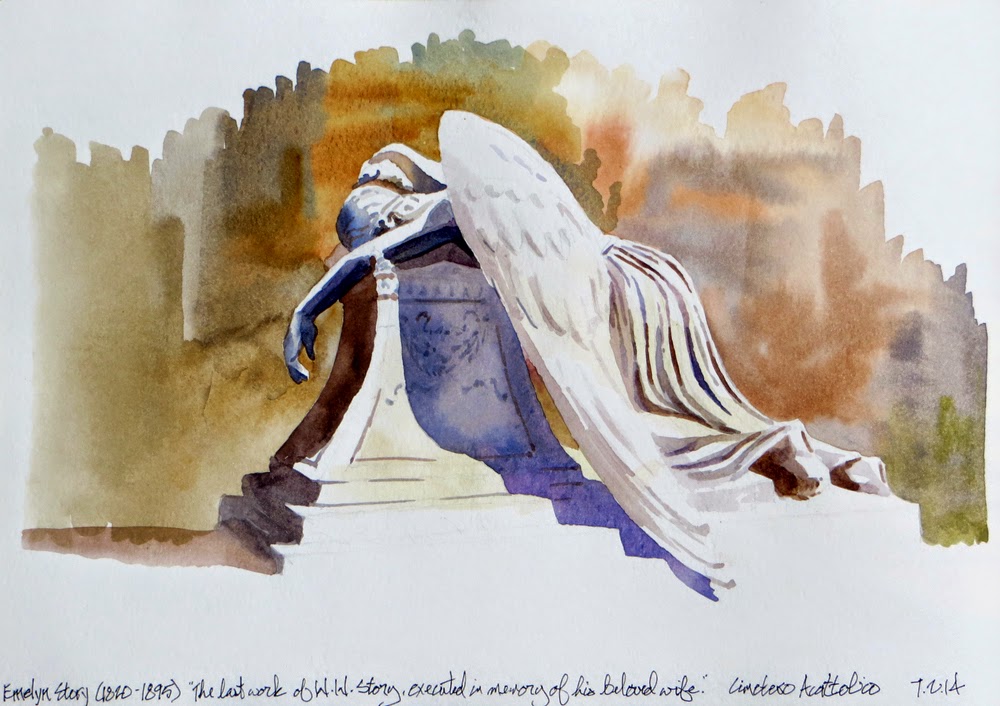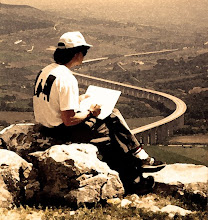The Food court
2 days ago
 I was in the Cimetero Acottolico, otherwise known as the "Protestant Cemetery." This is where you would have been buried if you happened to die in Rome and you weren't Catholic. So it's quite a who's-who of foreigners who lived in Rome - there are Keats and Shelley, Antonio Gramsci, Hendrik Christian Andersen, Chauncey Ives, Gottfried Semper, Gregory Corso ... the list is long and the funerary monuments greatly varied. But perhaps my single favorite tomb there is the "Angel of Grief," the final work of American sculptor William Wetmore Story, carved for his wife, Emelyn. There are numerous other versions of this sculpture but, as far as I know, this was the first. It's such a dynamic sculpture that it's difficult to find the best point of view for a sketch, but there's something about the angel's drooping hand that I found appealingly expressive. Also, the shadows were most interesting on this side at this particular time of day. The sketch needed some background, if only to give form to the upper part of the wing, but I'm glad I made the decision not to get into drawing plants and other tombs - I figured these might distract from the sculpture. It was really a nice drawing experience - quiet, peaceful, contemplative - and I look forward to drawing at this location again.
I was in the Cimetero Acottolico, otherwise known as the "Protestant Cemetery." This is where you would have been buried if you happened to die in Rome and you weren't Catholic. So it's quite a who's-who of foreigners who lived in Rome - there are Keats and Shelley, Antonio Gramsci, Hendrik Christian Andersen, Chauncey Ives, Gottfried Semper, Gregory Corso ... the list is long and the funerary monuments greatly varied. But perhaps my single favorite tomb there is the "Angel of Grief," the final work of American sculptor William Wetmore Story, carved for his wife, Emelyn. There are numerous other versions of this sculpture but, as far as I know, this was the first. It's such a dynamic sculpture that it's difficult to find the best point of view for a sketch, but there's something about the angel's drooping hand that I found appealingly expressive. Also, the shadows were most interesting on this side at this particular time of day. The sketch needed some background, if only to give form to the upper part of the wing, but I'm glad I made the decision not to get into drawing plants and other tombs - I figured these might distract from the sculpture. It was really a nice drawing experience - quiet, peaceful, contemplative - and I look forward to drawing at this location again.
